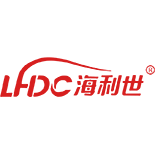Understanding the Functionality of Throttle Linkage and Its Bell Crank Mechanism in Vehicles
Understanding Throttle Linkage Bell Crank Mechanisms
Throttle linkage bell cranks play a crucial role in various internal combustion engines and machinery, serving as a pivotal component that governs the flow of air or fuel within the engine. These mechanical devices are designed to transfer motion from the accelerator pedal to the throttle valve, ultimately controlling the engine's power output. In this article, we will explore the function, design, and significance of throttle linkage bell cranks in automotive and industrial applications.
The Function of Throttle Linkage Bell Cranks
At its core, the throttle linkage bell crank acts as an intermediary device that translates linear movement into rotational motion. When a driver presses down on the accelerator pedal, this linear motion must be converted to a rotational movement that opens the throttle valve, allowing more air and fuel to enter the combustion chamber. The bell crank mechanism achieves this by using a lever arm that pivots around a fixed point, allowing a small movement of the pedal to create a larger movement at the throttle body.
A well-designed bell crank system ensures smooth operation and responsiveness in the vehicle’s acceleration. It minimizes any lag between the accelerator input from the driver and the engine's response, contributing significantly to the driving experience.
Design Considerations
The design of a throttle linkage bell crank is critical for its performance. Several factors must be considered during the design phase, including
1. Material Selection The materials used in the construction of the bell crank must be lightweight yet robust enough to withstand the stresses and strains of operation. Common materials include aluminum and high-strength plastics.
throttle linkage bell crank

2. Geometry The dimensions and angles of the bell crank's arms determine the leverage and the resultant throttle valve movement. Engineers must carefully calculate these dimensions to offer optimal performance across the engine's operating range.
3. Pivot Points The location of the pivot point affects the mechanical advantage of the linkage. A well-placed pivot can enhance responsiveness while reducing the effort required by the driver to achieve desired throttle levels.
4. Clearance and Alignment Proper clearance and alignment are essential to avoid binding or friction during operation. These issues can lead to inconsistent throttle operation, affecting engine performance and drivability.
The Importance in Automotive Systems
Throttle linkage bell cranks are not just mechanical accessories; they are integral to the overall performance of the vehicle. Properly functioning throttle linkages contribute to engine efficiency, power delivery, and emissions control. In modern vehicles, electronic throttle control systems are becoming more common, but many older models still rely on mechanical bell crank systems.
Moreover, the tuning of the throttle linkage can affect the driving dynamics of the vehicle. For instance, some performance vehicles employ adjustable bell crank systems that allow drivers to customize the throttle response to their preferences, enabling a more exhilarating driving experience.
Conclusion
Throttle linkage bell cranks are vital components in the operation of internal combustion engines, facilitating the necessary connection between the accelerator pedal and the throttle valve. Their design and functionality directly influence vehicle acceleration, responsiveness, and overall performance. As technology advances, while electronic systems gain popularity, the fundamental principles of throttle linkage bell cranks remain relevant in various applications, ensuring that they will continue to be a topic of interest among automotive engineers and enthusiasts alike. Understanding their role not only enhances our appreciation for engine mechanics but also opens the door to innovations in automotive design and performance optimization.
-
Upgrade Your Control with Premium Throttle CablesNewsAug.08,2025
-
Stay in Control with Premium Hand Brake CablesNewsAug.08,2025
-
Experience Unmatched Performance with Our Clutch HosesNewsAug.08,2025
-
Ensure Safety and Reliability with Premium Handbrake CablesNewsAug.08,2025
-
Enhance Your Vehicle with High-Performance Clutch LinesNewsAug.08,2025
-
Elevate Your Ride with Premium Gear CablesNewsAug.08,2025
